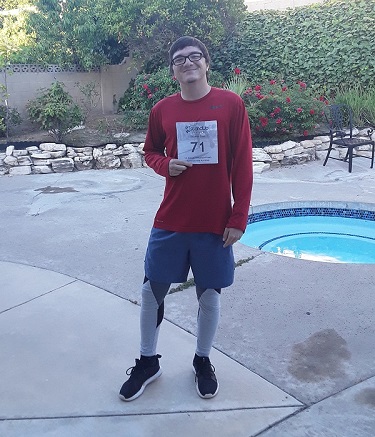StandUp for Kids – Orange County
Homelessness among youth populations has been growing in recent years — but not for the reasons people may think. Youth encounter many issues that lead to homelessness and the perils that come with it.
Listed below are some of the harmful myths that revolve around our youth and are backed with research conducted by governments, institutes, and universities (citations below). We also hear directly from the youth of StandUp for Kids – Orange County, who give their own personal story, that rebuke these myths.
Myth #1: Homeless youth are responsible for their own poverty.
According to the U.S. Department of Health and Human Services, youth fall into homelessness due to three reasons: Family problems, economic problems, and residential instability.
-
A study conducted in 1995 by the department showed that more than half of the youth surveyed were told by their parents to leave home or that their parents knew they were leaving and did not care (U.S. Department of Health and Human Services, 1995).
-
The family may suffer a financial crisis and end up on the streets; the youth may later be separated by the shelter, transitional housing, or child welfare policies (Shinn and Weitzman, 1996).
-
Residential instability – such as foster care — can lead to early and long-lasting youth homelessness (Roman and Wolfe, 1995). For example, youth living in residential or institutional placements are discharged when they become too old for foster care (Robertson, 1996).
-
One national study reported that more than one in five youth who arrived at shelters came directly from foster care, and that more than one in four had been in foster care in the previous year (National Association of Social Workers, 1992).
Michelle’s Story: After her father divorced her mother, who struggled with addiction, he moved Michelle’s family to Orange County. In these times, the family was homeless or living in temporary housing. Her father was then diagnosed with diabetes and required hospitalization, meaning Michelle was the only one working — until she lost her job because of the time and travel commitment required to care for him. Read more about Michelle here.

Myth #2: Homeless youth are responsible for drug addiction.
While some consider drug use a choice, it is generally a much more complicated story for many of these youths. According to the Homelessness and Addiction Center, youth ages 12 to 17 have a greater risk of homelessness than adults, and 71% of these children have reported a substance abuse disorder.
Some factors contributing to substance abuse among the homeless youth population are family abuse, genetics of substance abuse, physical, sexual, and emotional abuse, co-occurring disorders, battling a mental disorder, or dealing with the stress of being homeless.
While individual choice is something you can control, for many of these youth the deck is stacked against them. Drug use and homelessness are both outcomes from the environment they’ve been exposed to and for some of our youth these outcomes were close to inevitable.
Jacob’s Story: Jacob was already suffering from Attention Deficient Disorder and Bipolar Disorder as a result of growing up in an abusive and alcohol-driven environment. While on the streets, he began to also suffer from depression, which led him to spiral into the drinking and use of cocaine. Read more about Jacob here.

Myth #3: Homeless youth can just go home.
Although some might think it’s as simple as just going home, it’s completely out of the question for some youth.
- A study showed 46% of runaway and homeless youth had been physically abused, and 17% were forced into unwanted sexual activity by a family or household member (U.S. Department of Health and Human Services (c), 1997)
- Others feel as though they are trapped living in the street, and many homeless youths speak of multiâ€leveled and institutionalized discrimination as a constant condition that cannot be escaped by “going home” (U.S. Department of Health and Human Services (c), 1997)
- As discussed above, if a youth started in the foster care system, they may not have had a home to begin with.
Alex’s Story: Alex’s parents both struggled with substance abuse – his mother battling an opioid addiction, his father, an alcoholic whose abuse of oxycontin contributed to his violent abuse towards the family. This environment of substance abuse led Alex to follow his parents’ path. Alex was the only child living in the home with them at age ten, which made him the main target of abuse. Starting in middle school, he was kicked out of the house by his father repeatedly and brought back by his mother. During these times, he would sleep at a friend’s house, on the streets, under bridges, or under highways. Going back home was not an option Read more about Alex here.

It is important for those who have not experienced homelessness to be mindful of the dangers these myths have over the mental health and even the suicide risk level of homeless youth. Homeless youths with substance abuse issues are much more vulnerable to long-term substance abuse and untreated co-occurring disorders, which follow them into adulthood. The story for many of these youth is complicated and trying to over-simplify the situation is a natural tendency that we must fight against. The solution to solving this crisis is one youth at a time and that has always been the mantra of StandUp for Kids. If you’d like to help one youth or many please email [email protected] to get involved today.
